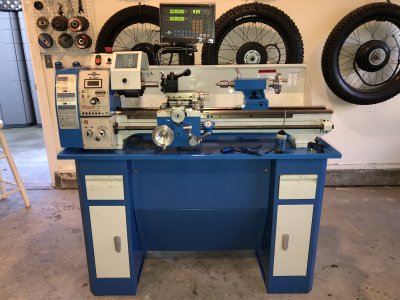- Joined
- Sep 8, 2019
- Messages
- 4,392
So I just got my first lathe all set up, a PM-1030V with a PM DRO. I don’t own a pin gage set, and I currently have more time than money.
Has anybody ever heard of somebody making their own pin gage set? Really the only question I have is about material and heat treatment.
I also have a mill, a PM-25MV. I imagine that I would make the base for the pin gauge set with the mill, perhaps out of aluminum.
I just do this for fun. I’m just looking to learn how to hit a length and diameter.
Has anybody ever heard of somebody making their own pin gage set? Really the only question I have is about material and heat treatment.
I also have a mill, a PM-25MV. I imagine that I would make the base for the pin gauge set with the mill, perhaps out of aluminum.
I just do this for fun. I’m just looking to learn how to hit a length and diameter.



